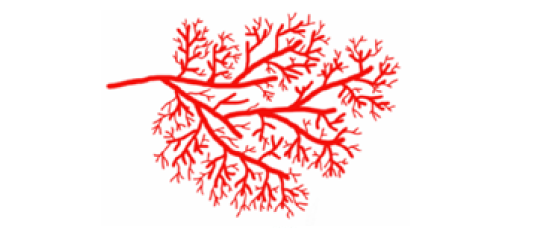Single Post

Geum Japonicum
By AdminEfficient Repair of the Brain and Heart.
> Narrowing blood vessels cause diminished blood supply to vital organs, and can lead to a number of serious complications
. Dementia: about 70% of dementias in the population aged >60 have vascular origin or are related to brain ischemia.[1] . Ischemic brain diseases: transient ischemic attack, stroke, vascular depression, etc. . Ischemic heart diseases: angina, myocardial infarction (heart attack), sudden death, arrhythmia, ischemic cardiomyopathy, etc.> A large number of studies have demonstrated that Geum japonicum (GJ) significantly restores the brain and heart functions by:
Reconstitution of the brain and heart blood supply:
. Stimulate new blood vessel development (angiogenesis) and collateral circulation formation to increase vessel density by 55%-70%[2-4] . Increase blood flow by 50% through NO release and compensatory artery dilatation[5] . Reduce infarction size by 35%~45%[4] . Prevent blood clotting through thrombin inhibition[6] . Reduce blood lipid level and viscosity[7]Regeneration of neurons and heart muscle cells
. Activate mesenchymal stem cells to differentiate into neurons and muscle cells for efficient brain and heart repair[4, 8-10]Enhancement of neurons and heart muscle cells survival
. Inhibit apoptosis of cardiac muscle and neuronal cells[2] . Remove free radicals through its strong antioxidant activity[7]Improvement in learning ability and symptoms in demented patients
. Enhance learning and memory abilities and shorten the learing time. . Recover significantly neural functions after 2-month AFGJ treatment in patients with dementia> References:
1. Nature Reviews Neuroscience. 2011, 12:723-738 2. Archives of Biochemistry and Biophysics 2007 459:91-97 3. Scientific Reports 2014 4 : 3962 4. Clinical Chemistry 2006 52(8):1460-1468 5. Journal of Ethnopharmacology 2007 109:128-133 6. Journal of Natural Products. 1998, 61, 1356-1360 7. Chemistry & Biodiversity 2009 6:402-410 8. Zhonghua Xin Xue Guan Bing Za Zhi. 2011 39(5):414-9 9. The International Journal of Biochemistry & Cell Biology. 2006; 38:1123-1133 10. PLoS ONE. 2009; 4(2):e4461 back to blog
